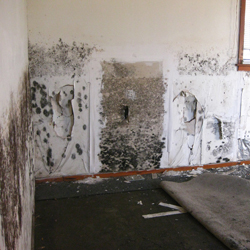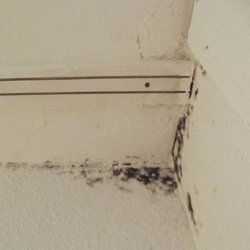Black Mold
If you’ve noticed spotted black, clustered fungal growths in your home or business, do yourself a favour: Contact us right away for professional mold removal services. These clustered growths are the dreaded black mold, one of the most highly toxic species out there. Learn as much as you can about it and help protect yourself, and don’t wait to call in the experts!
Have you recently spotted black, clustered growths in your bathroom, around your toilet or shower, in your kitchen, or in your basement? Have you been coughing or sneezing when you enter particular rooms?
Your home could have a black mold problem that may need immediate attention.
Worried About Black Mold? Get a Free Inspection!
Black mold is highly toxic and can pose serious health risks. Don’t let it threaten your home! Contact Mold Busters for a free virtual mold inspection. Our experts will provide a comprehensive assessment and a plan to eliminate mold, ensuring a safe and healthy environment. Act now to protect your space!
- What is black mold?
- What does black mold look like?
- Black mold pictures
- How fast does black mold spread?
- How does black mold form?
- What are black mold health symptoms?
- How to treat black mold poisoning?
- How to identify black mold in your house?
- How to prevent black mold growth?
- How to get rid of black mold?
What is black mold?
Black mold or Stachybotrys chartarum is usually accompanied by a distinctive odor and is greenish-black in colour.
It is one of the most toxic molds that can be found in homes as it produces toxins called mycotoxins, which are capable of causing health problems in humans.
What causes black mold?
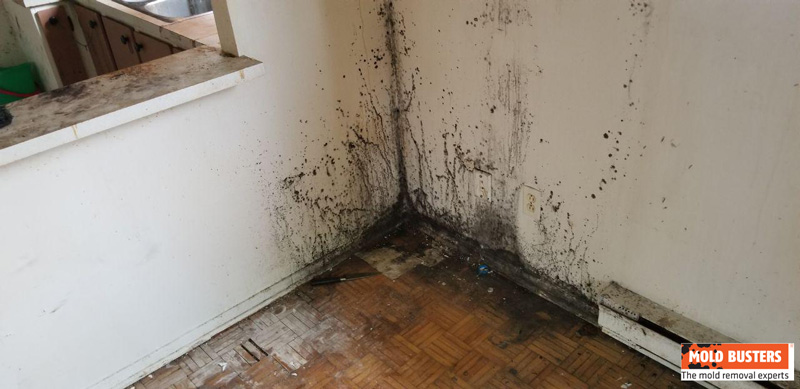
The most common cause of black mold is water damage. If water seeps into your home and stays there for long periods of time, it can create the perfect environment for black mold to grow.
Poor ventilation can also contribute to black mold growth. If your home doesn’t have enough fresh air, the humidity will increase and provide the perfect conditions for black mold to thrive.
If you have a leaky roof or faulty plumbing, it’s important to fix the problem as soon as possible to prevent black mold from growing.
What does black mold look like?
The appearance of black mold can vary depending on the species, but it is usually a black to dark brown or greenish-black slimy film that grows on organic matter. It is often found in damp and dark places such as basements, bathrooms, and crawlspaces. It’s easy to confuse black mold with other types of mold that you might encounter in your home.
Here are some signs that indicate you’ve got black mold:
- Unpleasant odors coming from your walls or other surfaces
- Moldy patches on walls or ceilings
- Mold growth on woodwork or other building materials
- Musty smells in different rooms of your house (especially after rain)
What does harmless black mold look like?
Harmless black mold looks like any other type of mold, but it’s a little more common in certain areas.
Like all molds, harmless black mold is a fungus that thrives on moisture and grows on surfaces that are damp or wet. It can be found in places like the bathroom and kitchen, where humidity is higher and the temperature tends to be warmer.
As with all molds, harmless black mold’s growth depends on how much water there is available for it to feed on. If you find a patch of harmless black mold growing on your shower curtain or in your basement, it could be due to excessive moisture in those areas.
What does black mold smell like?
Black mold is notorious for its distinctive, unpleasant odor. This smell is often described as musty or earthy, similar to the scent of wet socks or rotten wood. This odor is a result of the mold’s metabolic processes. As black mold grows and feeds, it releases microbial volatile organic compounds (MVOCs) into the air. These MVOCs are what we perceive as the moldy smell.
The presence of this smell can be a strong indicator of a black mold infestation, even if the mold is not visibly present. It’s often stronger in enclosed areas or where the mold growth is extensive. If you notice a persistent musty smell in your home, it’s advisable to investigate for potential mold growth, as early detection can prevent further spread and potential health risks.
Black mold pictures
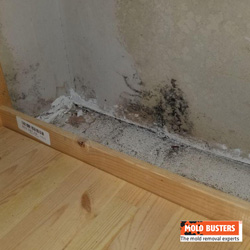
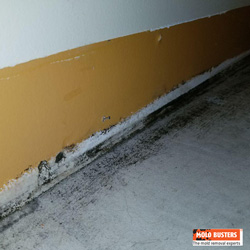
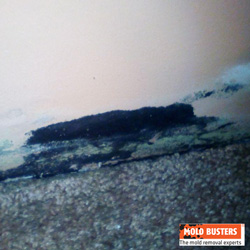
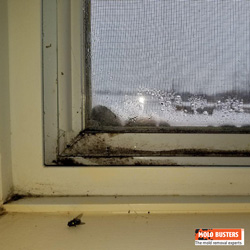
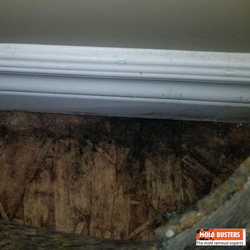
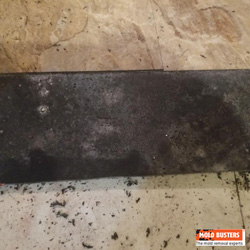
How fast does black mold spread?
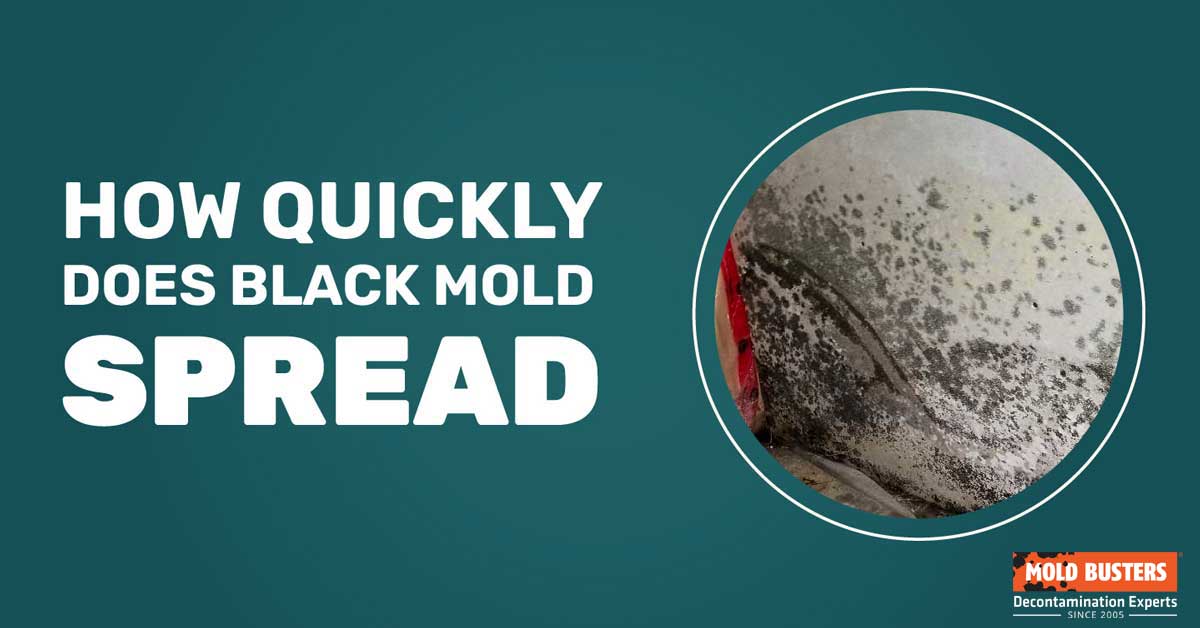
Mold begins to grow as soon as its spores land on a damp, fibre-rich material (wood, fabric, drywall…) and it can spread around the house within 24 to 48 hours. It colonizes in one to twelve days and grows at one square inch per day. In less than a week, it can cover surface areas of several square feet.
Unfortunately in most cases, mold is widespread and already a big problem before a problem is even suspected by the homeowners.
How long does it take for black mold to grow?
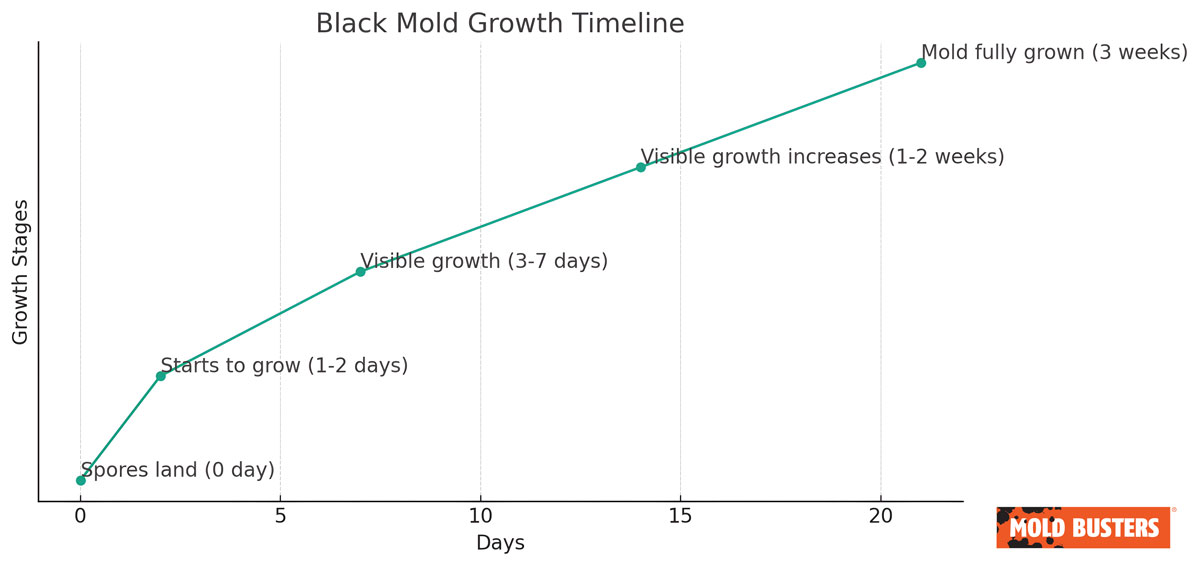
The timeline of black mold growth can be visualized in several stages, each dependent on the conditions of its environment:
- Upon landing on a damp, fiber-rich material such as wood, fabric, or drywall, black mold spores can start to grow within just 1-2 days. This initial growth is microscopic and not yet visible to the naked eye.
- By the 3rd to 7th day, the mold colonies have grown significantly and become visible as small black spots. The growth rate accelerates over the next week, covering larger surface areas.
- By the end of the 3rd week, the black mold is fully grown, potentially covering several square feet of surface area. However, it’s important to note that these figures can vary based on factors such as the level of moisture, temperature, and the type of surface the mold is growing on.
Given the speed at which black mold can spread and its potential health risks, it’s crucial to address any signs of it as soon as possible. If you suspect the presence of black mold in your home or business, it’s recommended to seek professional mold removal services immediately.
How fast does mold grow on walls?
It doesn’t take too long for mold to grow. It can start spreading on walls within 1-2 days.
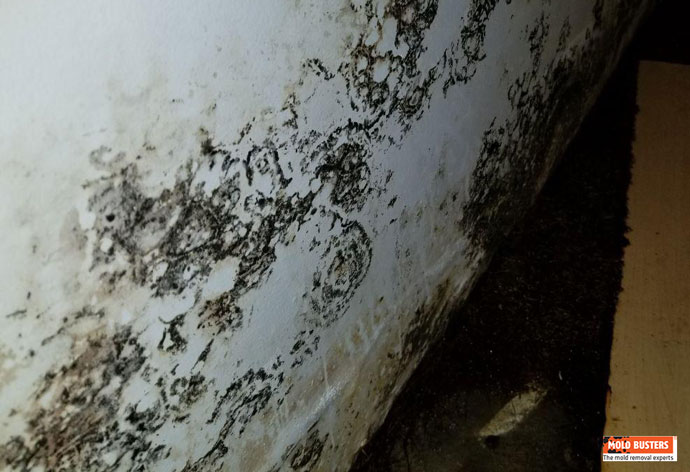
Where else does black mold grow?
Any moist surface is susceptible to mold. The surfaces that commonly support the growth of black mold, include: drywalls, paper and paper products, floor boards, cardboard, insulation materials, wallpapers, carpets, furniture, ceiling tiles, fibre-board, gypsum board, dust, fabric, and upholstery.
How does black mold form?
The main reason behind the formation of black mold is moisture, which can be caused by several things, such as, water leakage, lack of proper ventilation, flooding, irregular maintenance, humidifiers, condensation, clogged-up gutters, damp clothes, humid basements, or even water accumulation around the foundation of your house.

Did you know?
Stachybotrys (black mold) is the 3rd common toxic mold type found in homes we tested?! Find out more exciting mold stats and facts inside our mold statistics page.
Can black mold spores travel in the air?
Yes. Mold spores are airborne and can attach themselves to people’s skin, clothing, shoes, shopping bags, furniture, carpets, and even pets. Once spores enter your home, they can settle onto any surface and start to multiply. They can also enter your house through open doorways, open windows, and HVAC systems.
Mold spores are microscopic and are virtually found everywhere. They are naturally found in the air we breathe, both indoors and outdoors. Since spores are tiny and lightweight, they become airborne easily, every time we vacuum or walk on the carpets or even sit on our couch.
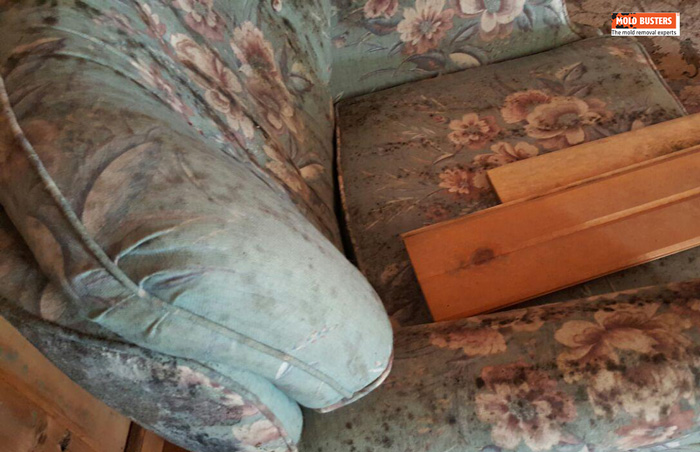
Can black mold spread from house to house?
Yes. If you have had mold in your old house and you’re moving into another space, it is possible to cross contaminate this new environment.
Because mold spores are not visible to the naked eye, it is hard to tell which surfaces are contaminated. Therefore, the mold has to be completely cleaned before you renovate or move to a new home.
What is the best temperature for black mold to grow?
Mold usually thrives in warm, humid conditions. Temperatures around 70 degrees Fahrenheit or 20 degrees Celsius are ideal conditions for mold to grow and multiply.
Can black mold grow in the winter time?
Cold, wet and freezing conditions during the winter months is also a good time of the year for molds to multiply. Mold is often found near sources of water where it easily grows and reproduces.
What are black mold health symptoms?
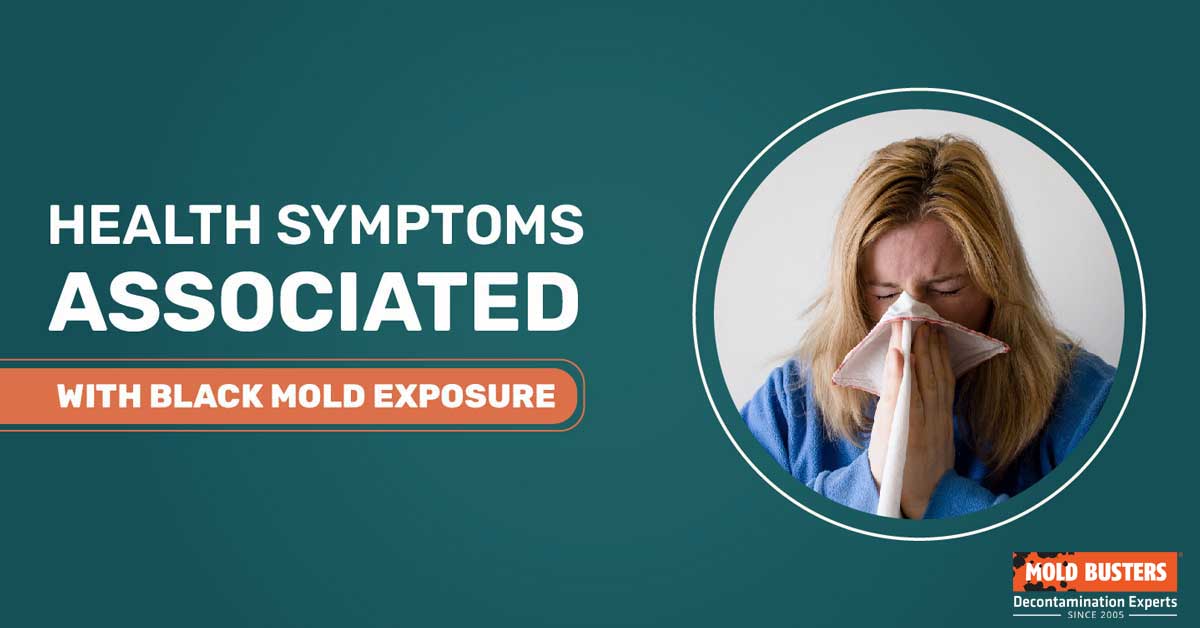
We all know mold isn’t welcomed in the home, but did you know too that breathing in the presence of mold can harm your health? There are over 2,000 different species of mold and the most dangerous of all is called Stachybotrys Chartarum, also known as black mold or the “invisible killer”.
Why is black mold so dangerous? Black mold releases toxic spores that linger in the air and attack your respiratory health. The potency of these toxic spores has proved to be the most detrimental to human health.
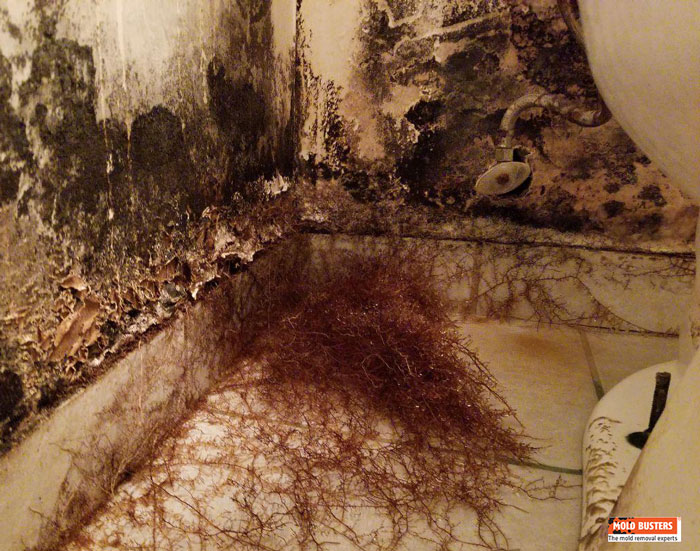
Black mold often appears as slimy and greenish-black. If its water source runs out, it can also appear as dry and powdery. Black mold is also dangerous because it’s sometimes difficult to distinguish from other species of mold.
The following are health symptoms associated with black mold exposure:
- Eye irritation
- Fever
- Chronic headaches
- Sneezing
- Rashes
- Chronic fatigue
In severe cases, symptoms caused by inhaling black mold can lead to the following health troubles:
- Vomiting
- Nausea
- Asthma
- Respiratory complications
Sometimes mold invades spaces that are hard to see and reach. It spreads fast, burrowing into walls and ceilings and hiding in cupboards and under carpets. Quite often, people are exposed to black mold without even knowing it. If you or anyone in your home is experiencing any of the aforementioned symptoms without knowing why, you may be exposed to mold.
Black mold should be approached with extreme caution. Tackling it without proper knowledge and equipment is unsafe. The suspected contamination should always be examined and removed by professionals.
A professional black mold removal service will tackle the contamination with advanced equipment and technology. For instance, protective masks and gear should be worn at all times, to ensure maximum safety.
Allergies and symptoms of black mold exposure in adults
Mold allergies are a common but often overlooked cause of many health issues. Exposure to indoor mold, particularly toxic black mold, can trigger a range of allergy symptoms. These can include sneezing, itchy eyes, runny nose, and even more severe reactions in individuals with compromised immune systems.
Toxic black mold, also known for its characteristic black hue and slimy texture, can produce mycotoxins – toxic substances that can lead to other serious health issues. These issues can be particularly severe in individuals with weakened immune systems, such as those with chronic illnesses or the elderly.
In addition to the typical allergy symptoms, exposure to black mold can also exacerbate asthma symptoms and lead to an allergic reaction known as hypersensitivity pneumonitis. In rare cases, exposure to certain molds can cause a severe condition known as acute idiopathic pulmonary hemorrhage.
How to treat black mold poisoning?
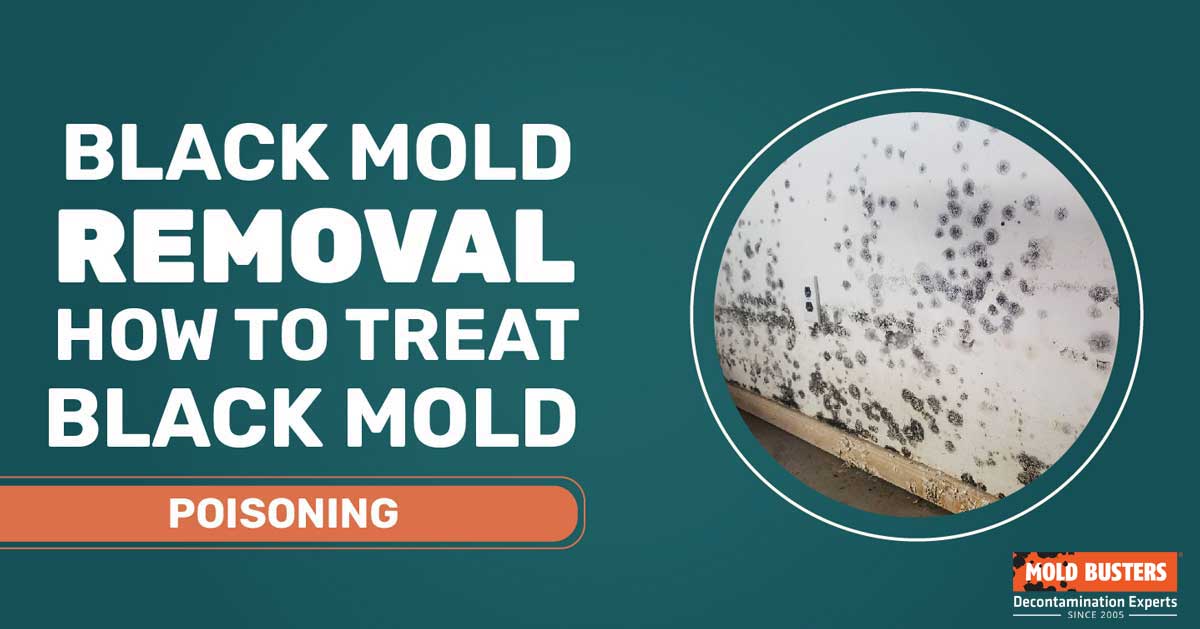
Black mold, scientifically referred to as Stachybotrys atra or Stachybotrys chartarum, is typically black or dark green and often linked to serious health problems.
In fact, black mold exposure can lead to poisoning, or “stachybotryotoxicosis” – a condition that’s dangerous, particularly for young children and the elderly.
Even though black mold poisoning typically affects horses, cows, and pigs, humans can become infected if they inhale or ingest the spores.
Symptoms of stachybotryotoxicosis include skin rashes (typically around the armpit or other spots prone to perspiration), throat and sinus irritation, burning eyes, and a decrease in the production of white blood cells.
Treating black mold poisoning
If you suspect you’re suffering from symptoms associated with black mold exposure or poisoning, there are some things you can do to improve your health.
- Avoid mold-contaminated areas. It’s not possible to get better if exposure to the problem at hand continues.
- Get laboratory blood tests taken to determine whether or not you actually have black mold poisoning, and consult with your doctor to determine what action (if any) needs to be taken to treat your symptoms. This may or may not include taking an antihistamine or a nasal decongestant, as well as using an inhaler if you experience wheezing or trouble breathing.
- For more severe cases of poisoning, your doctor may recommend immunotherapy, which involves injecting a very small amount of the toxin into your system so that you become immune to it.
- Hire a mold remediation professional to remove the mold from your home safely and effectively. If you’re still experiencing symptoms, it could be because your office rather than your home has the mold problem.
- With approval from your doctor, take 500 milligrams of brown seaweed extract (found in most health food stores) twice a day with water. Brown seaweed extract is a supplement that absorbs toxins in the body and flushes them out of your system. If you have ingested or inhaled mold, brown seaweed extract will help cleanse your body of the toxins. Keep in mind, however, that brown seaweed extract is not approved by the FDA and that people may react differently to it. That’s why it is important to consult with your doctor first!
In conclusion, the best way to avoid the negative effects of black mold poisoning is to minimize your black mold exposure.
You can do this by preventing its growth in the first place. If it’s too late to prevent it and you suspect there’s black mold already in your home, don’t wait to book removal, completed quickly and efficiently by the industry experts.
Black mold, typically green or black, in your home, can be extremely hazardous to your health.
How to identify black mold in your house?
Mold can quickly become a huge problem before any major signs of damage are visible. But the good news is, you can prevent and minimize the threat of black mold in your home by recognizing the signs — the earlier you do, the lesser the damage.
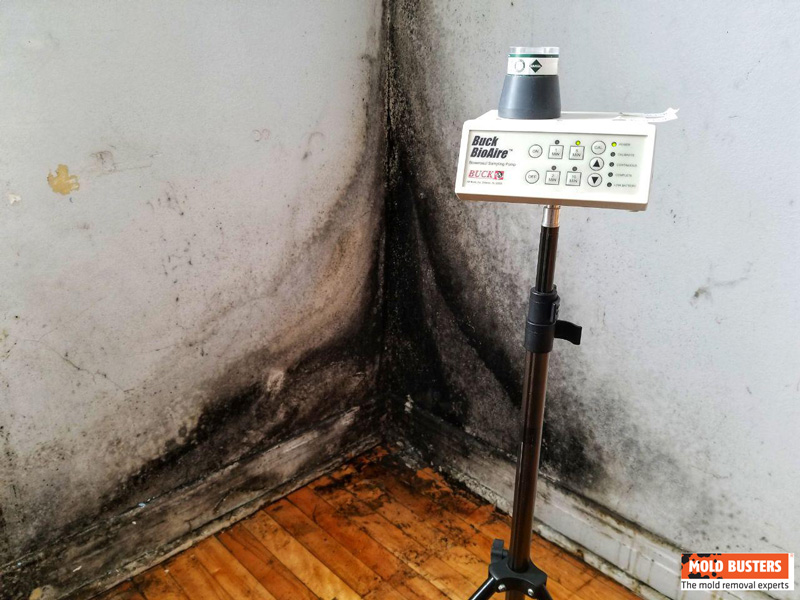
Moisture problems
No matter if they are current or they happened in the past, moisture is often the cause behind black mold. Leaky pipes, faucets or toilets, window condensation, recent flooding, etc. – all of that creates enough moisture for mold to develop in your home.
High level of humidity
Mold, is often related with high levels of humidity. An optimal humidity level would be between 30% and 50%, and anything above that is considered high, which is a perfect atmosphere for black mold, as well as any other type of mold, to develop and grow in your home.
Discoloration
Discoloration of walls and other surfaces is a big tell. Yellow water stains on walls are often followed by black mold spots. Even cracked or peeling paint, bubbling, and bulging are signs that there is moisture in or behind your walls.
Odors
If you cannot see or spot mold growth, you should be able to smell it in the air. Black mold has a specific musty, earthy smell. You should be able to pick up the scent, especially in closed-off areas such as basements or attics.
Health issues
People living with black toxic mold in their homes could be susceptible to upper respiratory tract symptoms such as coughing, sneezing, wheezing, fever, shortness of breath, runny nose, red or itchy eyes or skin, rashes, and other allergic reactions.
Black mold is known to cause reactions in people who already have asthma. Other possible health-related issues related to mold exposure include: fatigue, persistent headaches, dizziness etc.
What makes black mold a threat is that its spores can be easily inhaled by humans. Those with already weaker immune systems, such as infants and seniors, could particularly be at a risk of being infected.
There are several more risks associated with black mold aside the health risks. As it spreads, it can destroy your personal belongings, cause severe structural damage to your house and compromise your overall quality of life.
How to prevent black mold growth?
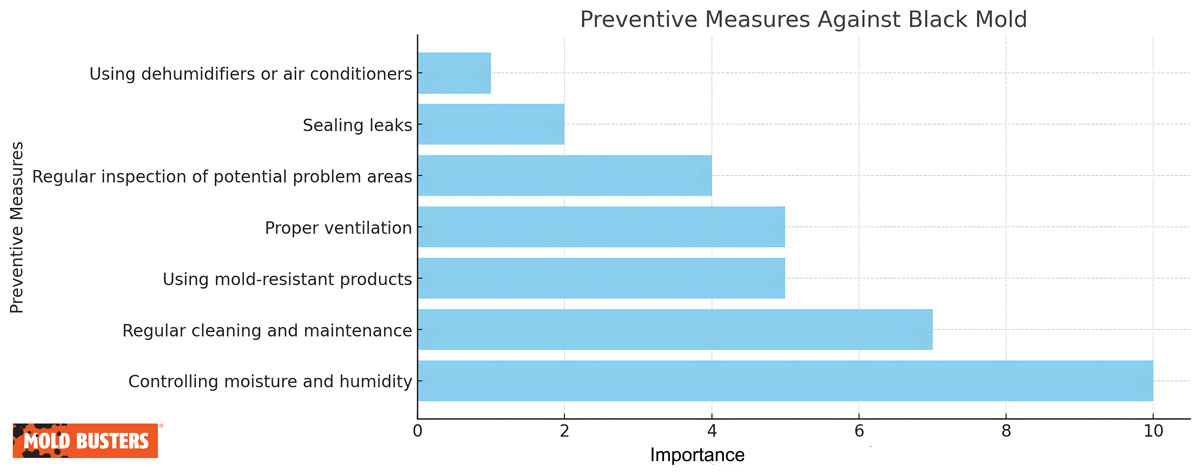
Conducting routine home inspections and maintenance are the best ways to deal with a black mold problem. Keep an eye out for evidence of water damage and visible mold on a regular basis. The conditions that cause mold should be corrected in a timely manner to prevent mold from growing further.
The extent of structural damage black mold can cause to your home, depends on how quickly you act to fix it.
Some of the ways you can keep mold out of your home is by:
- Controlling humidity levels. Relative humidity inside your home should never be higher than 50%. On excessively humid days, using air conditioners, ventilation systems or dehumidifiers can help control humidity.
- Managing day-to-day moisture in your home.
- Ensuring adequate ventilation in kitchens and bathrooms when cooking, showering, cleaning, etc.
- Using mold inhibitors.
- Cleaning the house regularly with anti-mold cleaners.
To completely get rid of black mold from your home, you must address the root cause of the problem, so that there is no recurrence of mold. For example, just cleaning up the mold without addressing the moisture problem will not solve the issue because the mold will very likely return.
We also offer a virtual inspection service that can help identify potential issues remotely.
How to get rid of black mold?
Trying to kill or remove toxic black mold yourself is not advisable. If not handled properly, you could end up disturbing the mold and releasing millions of spores and mycotoxins into the air. This could worsen you indoor air quality and cause damage to your home.
Since black mold is toxic, you’re better off contacting a professional mold remediation company with experience in cleaning mold in buildings and homes.
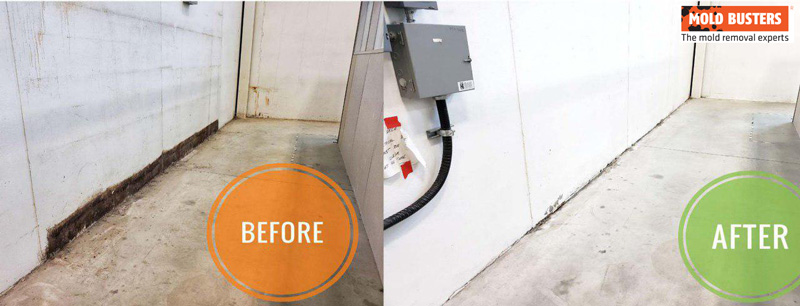
Mold removal specialists will be able to accurately determine the extent of the mold infestation and can suggest the right course of action for your home. If you suspect that your home has black mold—that is, if you can see and/or smell it— call trusted local mold experts, Mold Busters.
If you’re in the Montreal or Ottawa area, we can provide professional mold removal services to help you deal with this issue.
A healthy, mold-free home ensures a healthy, happy family.

Get Special Gift: Industry-Standard Mold Removal Guidelines
Download the industry-standard guidelines that Mold Busters use in their own mold removal services, including news, tips and special offers:
"*" indicates required fields
Published: November 23, 2018 Updated: May 22, 2024

Written by:
John Ward
Account Executive
Mold Busters
Fact checked by:
Michael Golubev
CEO
Mold Busters

